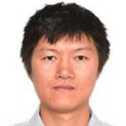Micro-Nano Science and Engineering
A special issue of Micromachines (ISSN 2072-666X).
Deadline for manuscript submissions: closed (31 March 2021) | Viewed by 58502
Special Issue Editors
Interests: information optics; optical chip system integration and microfluidics; optofluidic devices; biosensors; on-chip biochemical sensing and environmental detection
Special Issues, Collections and Topics in MDPI journals
Interests: micro/nanomedicine; microfluidics; diagnostics; biosensing; nanomaterials
Special Issues, Collections and Topics in MDPI journals
Interests: photonic crystal fibers devices; advanced optical fiber manufacturing technology; fiber-based optofluidics; fiber sensors; all-fiber devices and laser technology
Special Issues, Collections and Topics in MDPI journals
Interests: physics; microfluidics; mathematics
Interests: nanophotonics; optical metamaterials; plasma materials
Interests: microfluidics; optofluidics; biomimetics; photocatalysis; plasmonics
Special Issues, Collections and Topics in MDPI journals
Special Issue Information
Dear Colleagues,
The persistence of COVID-19 continues to wreak havoc on our global research community; many researchers are having a hard time to make the deliveries on schedule, including research publications. To support our research community and to serve the surging needs for rapid publication, we are now organizing this Special Issue as a fast lane to publish papers within 30 days. The papers will still go through a rigorous peer-review process to ensure a high scientific quality, but we will expedite the whole process and make decisions quickly.
Micromachines is a peer-reviewed open access journal on all aspects of micro/nano-scaled structures, materials, devices, systems as well as related micro- and nanotechnology from fundamentals to applications. Its Impact Factor has increased continuously in recent years and reached 2.523 in 2019. Its primary areas of research interests include, but are not limited to, the following:
- Micro-/nano-scale structures, devices, systems, and applications;
- Micro- and nano-technologies for biological, chemical, medical, environmental, and energy applications;
- Micro- and nano-scale fabrication and manufacturing technologies;
- Theories and analyses of multiphysics phenomena in micro-/nano-scale;
- Material developments for micro- and nano-structures.
All scholars in the communities of micro-/nano-sciences and technologies are invited to submit original research articles, reviews, perspectives, letters, and communications on any related topics.
Dr. Yi Zhang
Prof. Dr. Xuming Zhang
Prof. Dr. Limin Xiao
Prof. Dr. Yi Yang
Prof. Dr. Shumin Xiao
Dr. Abdel I. El Abed
Guest Editors
Manuscript Submission Information
Manuscripts should be submitted online at www.mdpi.com by registering and logging in to this website. Once you are registered, click here to go to the submission form. Manuscripts can be submitted until the deadline. All submissions that pass pre-check are peer-reviewed. Accepted papers will be published continuously in the journal (as soon as accepted) and will be listed together on the special issue website. Research articles, review articles as well as short communications are invited. For planned papers, a title and short abstract (about 100 words) can be sent to the Editorial Office for announcement on this website.
Submitted manuscripts should not have been published previously, nor be under consideration for publication elsewhere (except conference proceedings papers). All manuscripts are thoroughly refereed through a single-blind peer-review process. A guide for authors and other relevant information for submission of manuscripts is available on the Instructions for Authors page. Micromachines is an international peer-reviewed open access monthly journal published by MDPI.
Please visit the Instructions for Authors page before submitting a manuscript. The Article Processing Charge (APC) for publication in this open access journal is 2600 CHF (Swiss Francs). Submitted papers should be well formatted and use good English. Authors may use MDPI's English editing service prior to publication or during author revisions.







